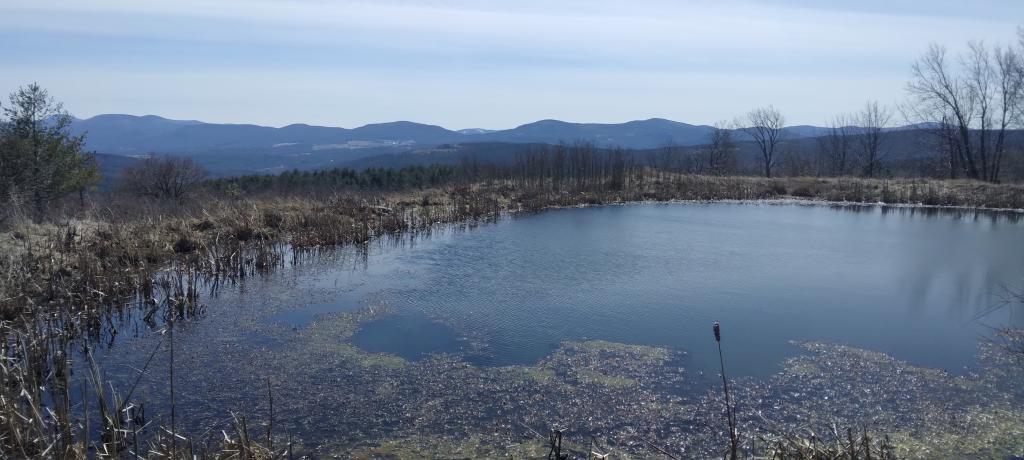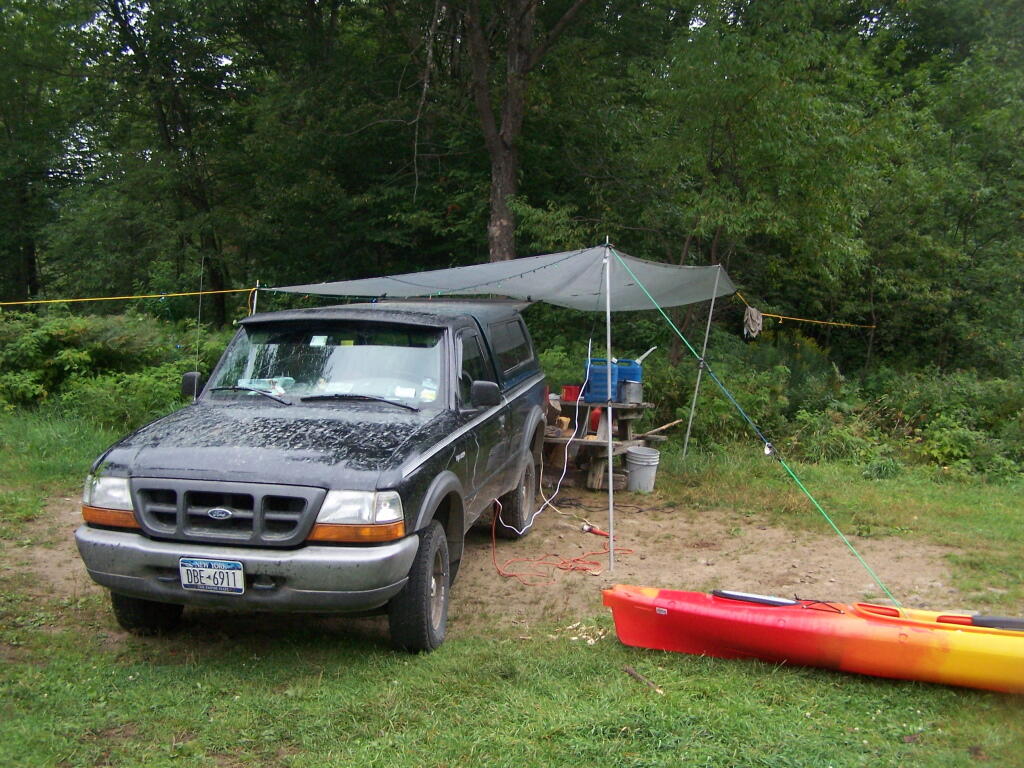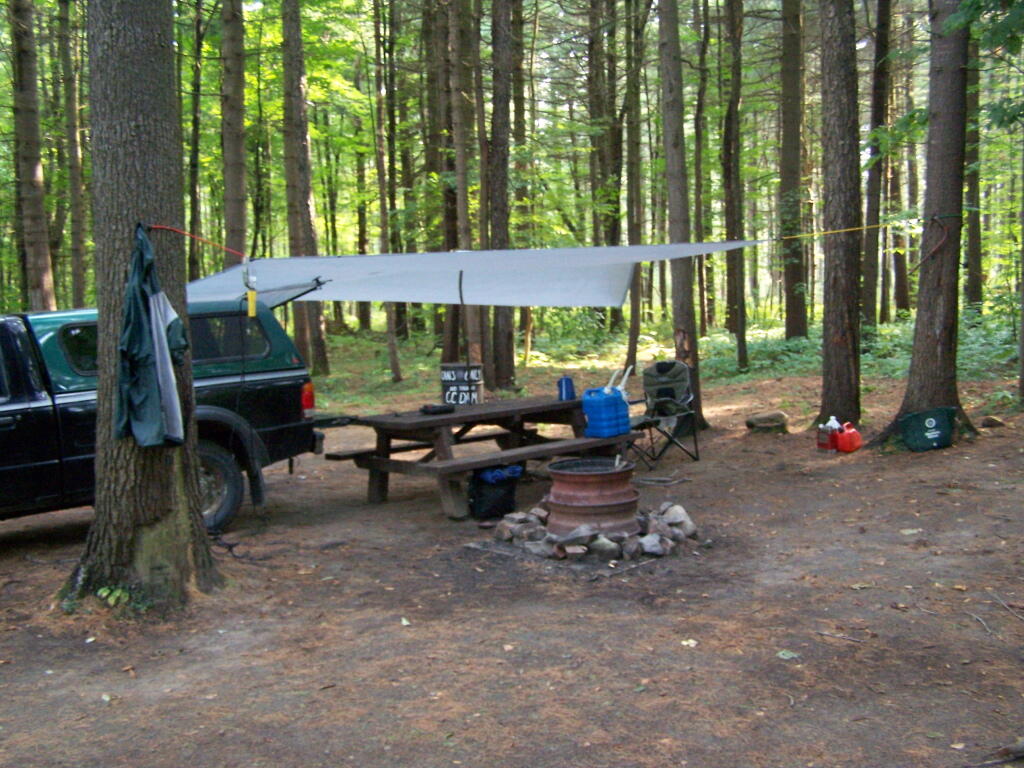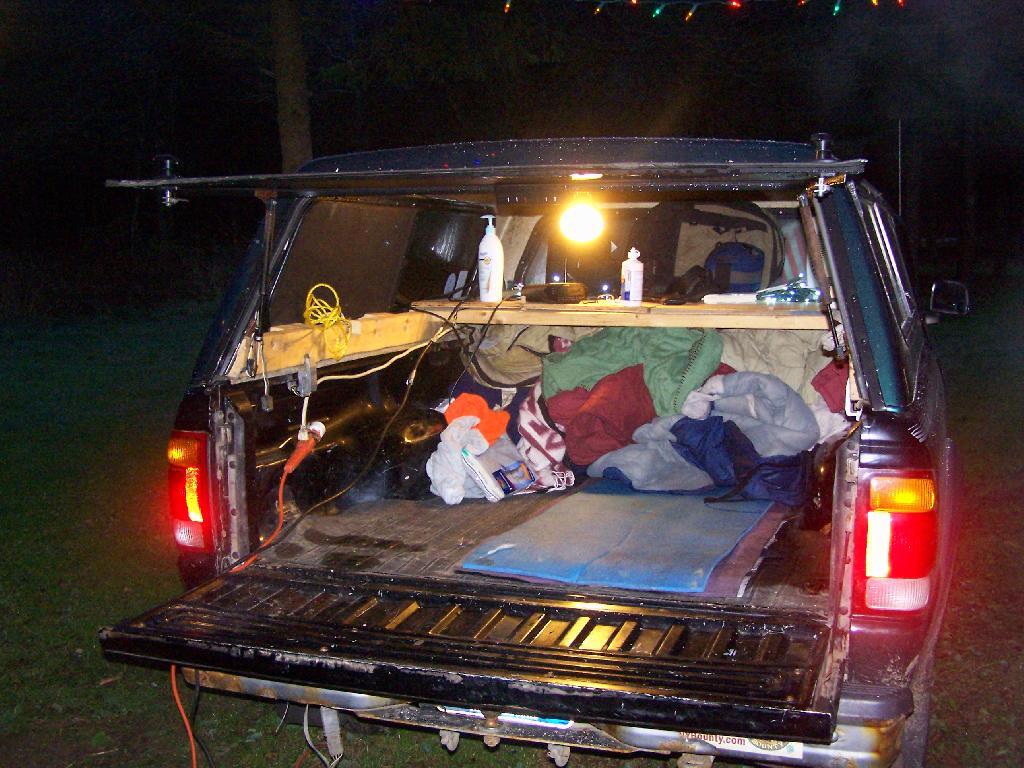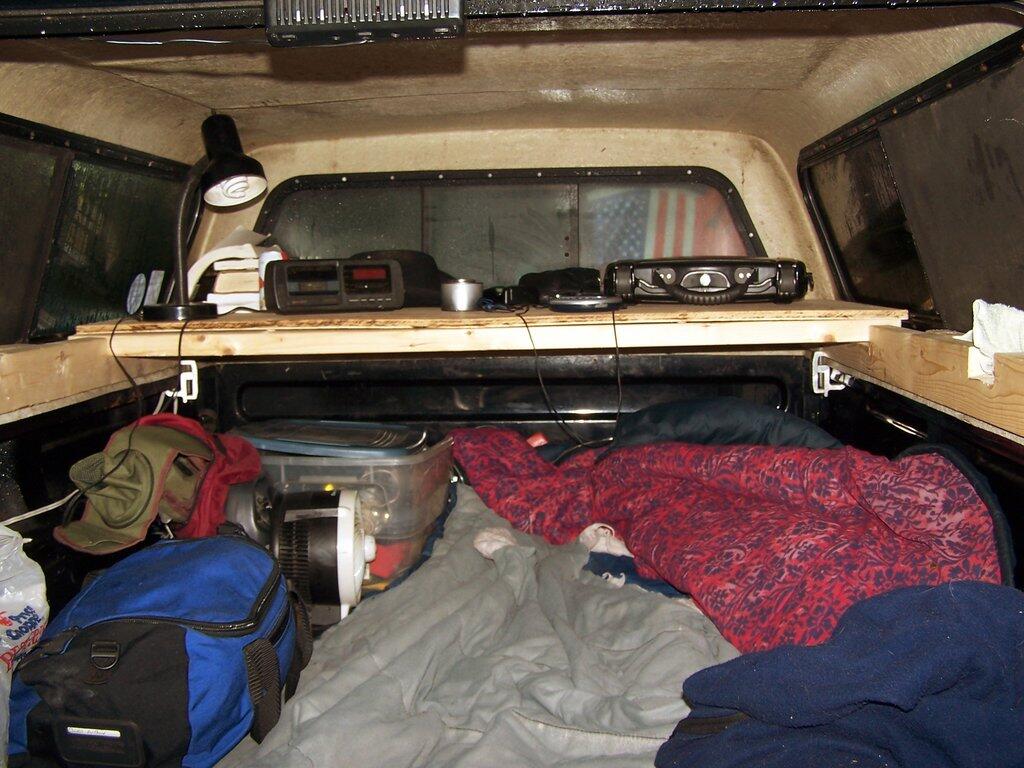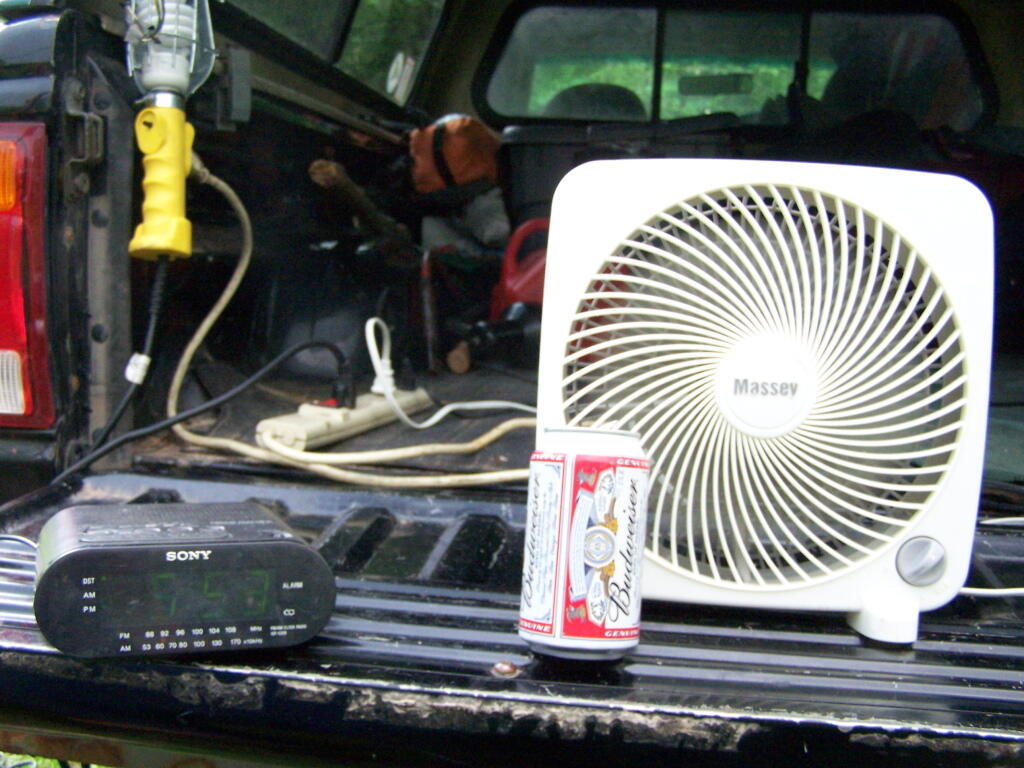In recent months I have done a series of articles about truck camping and my set up. This time I decided to do an article with pictures, showing my set up over the years and some of the equipment I currently use.
My Truck.
This picture was taken camping down by Betty Brook in the Burnt Rossman State Forest. This is one of my favorite places for camping. No fancy gear set up here, just unloaded the things I needed from the back, started a campfire, and enjoying the afternoon sunshine on this cold fall afternoon.
Electricity Generation.
Lanterns are okay for camping in the back country. I however like being able to camp with electrical lighting and small electrical appliances when I am truck camping, as I have a ready source of energy — the truck’s battery. My current inverter (Vector 800-watt inverter) has voltage meter that displays how much power the truck’s battery is putting out, so as it gets lower, I simply just turn on the engine for 10-15 minutes to recharge the battery. At idle speed, especially in summer months, the truck uses minimal gasoline to recharge the battery.
In this picture, you can see the wires coming out of the cab, from the inverter, out to Christmas Lights, and to the regular old power strip I have in the bed of pickup, which provides places to plug in the lead lamps, the alarm clock, more Christmas Lights, and anything else that needs juice like my camera battery charger or even my laptop.
Lighting the Campsite.
I use a set of 9-watt, 12-watt or 26-watt compact floresecent lamps in conventional lead lamps to light the campsite. I swap out light bulbs depending on my need for light, choosing smaller bulbs to conserve energy whenever possible. These compact lamps put out the equalivent of a 40-watt, 60-watt, or 100-watt conventional light bulb respectively.
The light is largely flicker free, much brighter and higher quality then white-gas lanterns, and is superior for reading. I frequently read late into the night when I am out camping.
Tarp and Polls.
I originally bought this inexpensive tarp from Walmart for privacy while taking “showers” from my portable shower bag. I use it far more to keep the rain off my head on rainy days when camping. Usually it’s just attached to surrounding trees with bungee cords, other times I use a mixture of poles, trees, stakes, and occassionally the kayak.
In this picture, the tarp is held up entirely by trees and long bungee cords, when I was camping up at Moose River Plains down by the Otter Brook.
In the Cab
I frequently store one or more plastic tubs in the cab of my truck at night, usually with food and other things that I want to keep away from animals and don’t want back where I am sleeping.
Under the Cap.
This picture shows some of the wires, camping gear, and box full of beer I had when I was camping up at the Allegheny National Forest.
Camping at Sugar Hill, with my wooden table in my pickup, a little bit before the un was up. I have a table lamp up there, and below the table is all the blankets I brought to stay warm this time of year.
Using my tailgate as a table as I have breakfast when I was camping up at Stoney Pond.
Hanging Out at the Campsite.
Camping up on Leonard Hill last summer. The beer is chilling on the bumper, and the campfire in the front, along with Christmas light.
Camping up at Allegenheny National Forest. Getting ready and packed up for the morning, burning off some trash before I head out for the day’s events.

